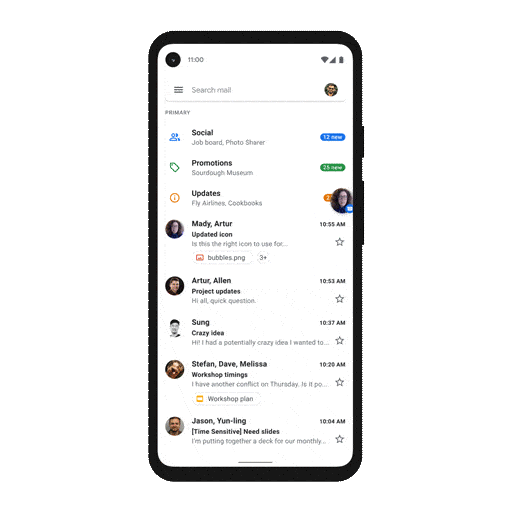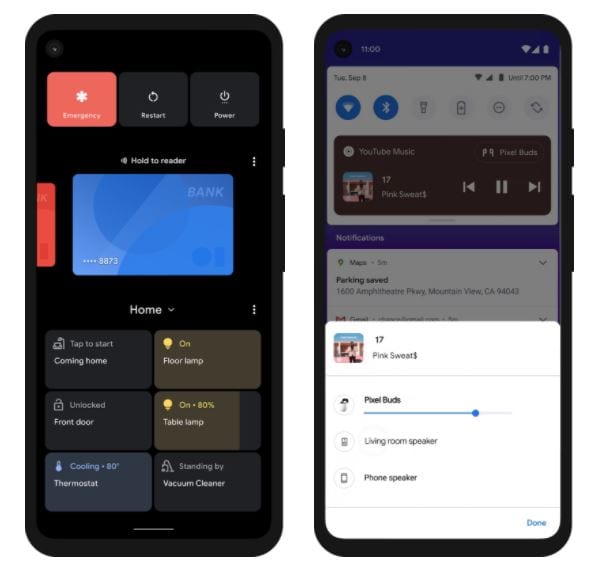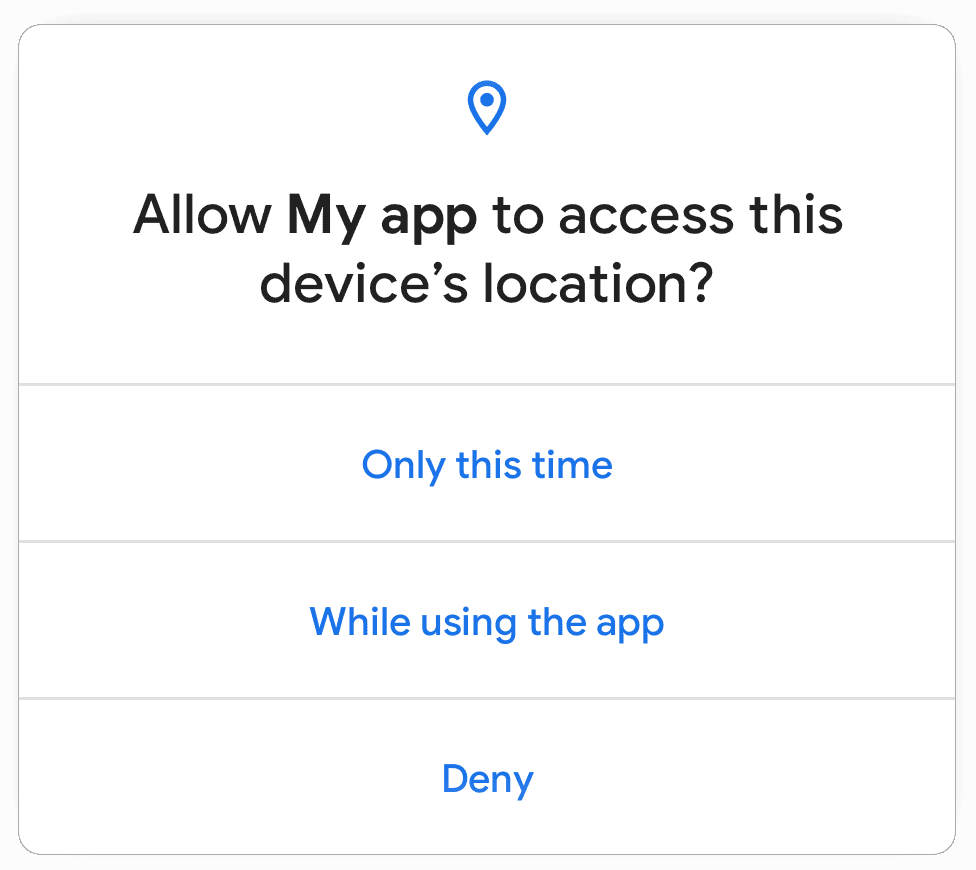Updates are continuously being added on top of this page…
Update as of February 25: According to the latest update, Sprint users in the United States with Galaxy Note 20 or Galaxy Note 20 Ultra are now getting upgraded to Android 11-powered OneUI 3.1 in the country with build number DUB5 and via OTA.
Update as of February 22: According to the latest piece of information available, Sprint is now releasing OneUI 3.0 update on Galaxy S10, Galaxy S10e, and Galaxy S10+ units in the country bearing version number FI
Update as of February 9: According to the latest information, Samsung Galaxy Note 10 and Note 10+ is now intercepting Android 11-powered OneUI 3.0 in the U.S. locked on devices with Sprint. Note that the users will have to wait for sometime as the OTA rollout takes time. [Source 1, 2 ]
Update as of February 8: According to the latest update, Samsung is now rolling out Android 11-powered OneUI 3.0 build on Samsung Galaxy A71 5G in the U.S. with model number SM-A716. It is getting the build number CUA7 and the update is following its organic batch-by-batch OTA rollout mechanism. [Source]
Update as of January 20: Samsung Galaxy S20 FE users on Sprint have confirmed intercepting Android 11-based OneUI 3.0 update on the device in the United States. [Source]
Update as of January 15: Based on the latest information provided by a user report, the Samsung Galaxy Z Flip 5G is now getting upgraded to Android 11-based OneUI 3.0 in the U.S. [Source]
Update as of December 8: Sprint hasn’t released the Android 11-based OneUI 3.0 across Samsung Galaxy S20 series yet. This means Samsung Galaxy S20, S20+, and S20 Ultra users are still elusive of the update. But an user on Reddit found an easy workaround to trigger the update.
If you have a T-Mobile SIM and it doesn’t matter if it is working or not, you can trigger an update. For this to work, simply remove the Sprint SIM card off your Galaxy S20 series device, slide in the T-Mobile. Now, this will trigger an update on your Galaxy S20/S20+/S20 Ultra. Simply download the firmware and upgrade to Android 11-based OneUI 3.0 and it is done. Remove the TMO SIM card and place your active Sprint SIM card back. This way, you get OneUI 3.0 on Sprint and it works. Apparently, a user report confirmed that the stable OneUI 3.0 is now rolling out for Sprint users who are a part of T-Mobile Network Experience (TNX) program. [Source 1, 2]
Update as of December 6: Based on the latest information, the Samsung Galaxy A50 is being tested with Android 11-based OneUI 3.0. Note that the device has not yet received Android 10-based OneUI 3.0. According to CheckFirm, the Android 11 build is being run on Sprint and thus, it could be near if not that far. [Source]
Google has already made the Android 11 operating system live for the users of the Google Pixel phones. Notably, the other OEMs are either in the beta stage or developing Android 11 OS for their smartphones. We expect the devices from other OEMs to pick up the Android 11 updates soon in the coming months. However, for those who are using the Sprint carrier-locked variant smartphones, the updates will take some time.
As here, it is the carrier that pushes the updates and not the OEM. Meaning that even though the unlocked model has already received the Android 11 update, it may take some time in arriving for the Sprint variant. In this post, we will give you a complete list of devices on the Sprint network. Notably, Sprint is now a part of T-Mobile and there are a bunch of devices that will be getting updated to Android 11. So, with that being said, let us jump straight into the article itself:
![]()
Android 11 Features
Well, Sprint will tweak a few of the Android 11 features depending on the device’s OEM. However, to give you an overview of what all features, you will be getting after updating your Sprint device with Android 11, here is the official Android 11 changelog for your reference:
People, Controls, Privacy
People
Android 11 is people-centric and expressive, reimagining the way we have conversations on our phones, and building an OS that can recognize and prioritize the most important people in our lives. For developers, Android 11 helps you build deeper conversational and personal interactions into your apps.
- Conversation notifications appear in a dedicated section at the top of the shade, with a people-forward design and conversation specific actions, such as opening the conversation as a bubble, creating a conversation shortcut on the home screen, or setting a reminder.
- Bubbles – Bubbles help users keep conversations in view and accessible while multitasking on their devices. Messaging and chat apps should use the Bubbles API on notifications to enable this in Android 11.
- Consolidated keyboard suggestions let Autofill apps and Input Method Editors (IMEs) securely offer users context-specific entities and strings directly in an IME’s suggestion strip, where they are most convenient for users.

Controls
Android 11 lets users quickly get to and control all of their smart devices in one space. Developers can use new APIs to help users surface smart devices and control media:
- Device Controls make it faster and easier than ever for users to access and control their connected devices. Now, by simply long pressing the power button, they’re able to bring up device controls instantly, and in one place. Apps can use a new API to appear in the controls.
- Media Controls make it quick and convenient for users to switch the output device for their audio or video content, whether it be headphones, speakers, or even their TV.
Privacy
In Android 11, we’re giving users even more control and transparency over sensitive permissions and working to keep devices more secure through faster updates.
- One-time permission – Now users can give an app access to the device microphone, camera, or location, just for one time. The app can request permissions again the next time the app is used.
- Background location – Background location now requires additional steps from the user beyond granting runtime permission. If your app needs background location, the system will ensure that you first ask for a foreground location. You can then broaden your access to background location through a separate permission request, and the system will take the user to Settings to complete the permission grant.
Also, note that in February we announced that Google Play developers will need to get approval to access background location in their app to prevent misuse. We’re giving developers more time to make changes and won’t be enforcing the policy for existing apps until 2021. - Permissions auto-reset – if users haven’t used an app for an extended period of time, Android 11 will “auto-reset” all of the runtime permissions associated with the app and notify the user. The app can request the permissions again the next time the app is used.
- Scoped storage – We’ve continued our work to better protect the app and user data on external storage, and made further improvements to help developers more easily migrate.
- Google Play system updates – Launched last year, Google Play system updates help us expedite updates of core OS components to devices in the Android ecosystem. In Android 11, we more than doubled the number of updatable modules, including 12 new modules that will help improve privacy, security, and consistency for users and developers.
- BiometricPrompt API – Developers can now use the BiometricPrompt API to specify the biometric authenticator strength required by their app to unlock or access sensitive parts of the app. For backward compatibility, we’ve just added these capabilities to the Jetpack Biometric library. We’ll share further updates as the work progresses.
- Identity Credential API – This will unlock new use cases such as mobile drivers licenses, National ID, and Digital ID. We’re working with various government agencies and industry partners to make sure that Android 11 is ready for digital-first identity experiences.
Helpful innovation
- Enhanced 5G support – Android 11 includes updated developer support to help you take advantage of the faster speeds and lower latency of 5G networks. You can learn when the user is connected to a 5G network, check whether the connection is metered, and get an estimate of the connection bandwidth. To help you build experiences now for 5G, we’ve also added 5G support in the Android Emulator. To get started with 5G on Android, visit the 5G developer page.
- New screen types – Device makers are continuing to innovate by bringing exciting new device screens to markets, such as hole-punch and waterfall screens. Android 11 adds support for these in the platform, with APIs to let you optimize your apps. You can manage both hole-punch and waterfall screens using the existing display cutout APIs. You can set a new window layout attribute to use the entire waterfall screen, and a new waterfall insets API helps you manage interaction near the edges.
- Call screening support – Android 11 helps call-screening apps do more to manage robocalls. Apps can verify an incoming call’s STIR/SHAKEN status (standards that protect against caller ID spoofing) as part of the call details, and they can report a call rejection reason. Apps can also customize a system-provided post-call screen to let users perform actions such as marking a call as spam or adding to contacts.
Sprint Android 11 – Supported Devices
Here is the list of devices from Sprint that will be receiving the Android 11 update from the carrier:
- Google Pixel 5
- Google Pixel 4a 5G
- Google Pixel 4
- Google Pixel 4 XL
- Google Pixel 3a
- Google Pixel 3a XL
- Google Pixel 3
- Google Pixel 3 XL
- Samsung Galaxy Note 20
- Samsung Galaxy Note 20 Ultra
- Samsung Galaxy S20
- Samsung Galaxy S20 Plus
- Samsung Galaxy S20 Ultra
- Samsung Galaxy S10
- Samsung Galaxy S10 Plus
- Samsung Galaxy S10e
- Samsung Galaxy Note 10
- Samsung Galaxy Note 10 Plus
- Samsung Galaxy A51
- Samsung Galaxy A50
- Samsung Galaxy A71 5G
- Samsung Galaxy A21
- Samsung Galaxy A20
- Samsung Galaxy A11
- Samsung Galaxy A10e
- Samsung Galaxy Tab A 10.1 (2019)
- Samsung Galaxy Tab A 8.4 (2020)
- Samsung Galaxy Tab S6
- Samsung Galaxy Z Flip
- LG G8 ThinQ
- LG G8X ThinQ
- LG V50 ThinQ
- LG V60 ThinQ
- LG Stylo 6
- LG Aristo 5
- OnePlus 8
- OnePlus 7 Pro 5G
Wrap Up!
Note that the updates are not out yet. And we will keep updating this post, once Sprint rolls out the beta or stable version of the Android 11 updates for its devices. Moreover, note that this is not the official list of phones that have been touted by Sprint for receiving the Android 11 update. More devices will be added or removed from this list as more information comes out.
Further, it is also possible that Sprint may release the updates, after a week or so, the OEM releases the Android 11 updates for its devices. We would advise the users of any of the listed Sprint variants to keep a check on this post, to stay updated related to any information on Android 11 updates for the Sprint variants.
In the meantime, if you liked this content and want to read more content, for more such awesome coverage, you can head over to our check out our Windows Guides, Gaming Guides, Social Media Guides, iPhone, and Android Guides to read more. Make sure to subscribe to our YouTube Channel for awesome videos related to Android, iOS, and Gaming. So, until the next post…Cheers!


